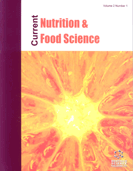Abstract
Vitamin D is a seco-steroid hormone that has long been known for its important role in regulating body levels of calcium and phosphorus, and in mineralization of the bone. In addition to its endocrine effects, vitamin D has important autocrine/paracrine roles. The last step in the activation of vitamin D, the hydroxylation on Carbon 1, takes place mainly in the kidney. However, extra-renal sites have been also found to exhibit 25-hydroxyvitamin D3-1-α-hydroxylase activity. The hormonally active form of vitamin D (1,25(OH)2D3, or calcitriol) mediates its biological effects by binding to the vitamin D receptor, a nuclear receptor. After the receptor is activated by calcitriol or its analogs, the protein changes its tridimensional conformation, which leads to key processes in mediating its nuclear actions such as binding to specific DNA sites to modify the expression of target genes. Several steps take place in order to increase or decrease the transcription rate of a target gene. First, homodimerization of the vitamin D receptor or heterodimerization with the retinoid X receptor allows the complex to bind to DNA. Then, several proteins are recruited to the complex that either increase or decrease chromatin condensation, thus acting like co-represors or co-activators, respectively, finally decreasing or increasing the target gene transcription. The co-activators bind to several extra proteins that build a bridge to the basal transcriptional machinery. Therefore, little changes in the receptor’s tridimensional structure elicited by different analogs can lead to differences in protein recruitment and in gene transactivation. Furthermore, differences in the cellular environment can yield different responses to the same analog. This characteristic of the nuclear receptors makes them good candidates as valuable therapeutic targets.
Keywords: Co-represors, co-activators, 1, 25-dihydroxyvitamin D, DNA binding domain (DBD), gene transcription, ligand binding domain, 25(OH)D, parathyroid hormone (PTH), VDR, VDRE, vitamin D metabolism.



















